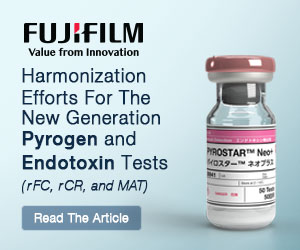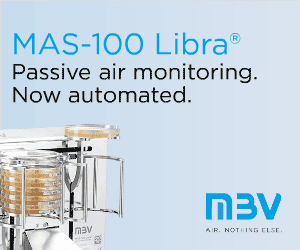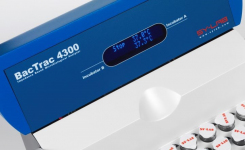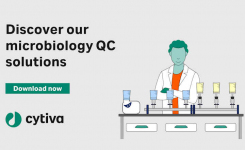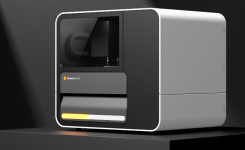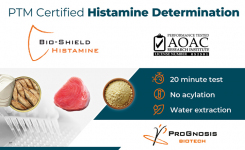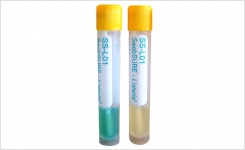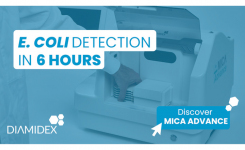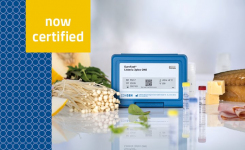Thermo Scientific Rapid New Tests That Enable Swifter Diagnosis and Infection Control
go back to news archives| | Visit the Thermo Scientific stand at ECCMID, Helsinki, Finland 16-19 May 2009 Thermo Scientific will be exhibiting its newest products for clinical microbiologists from booth 621 at the European Congress of Clinical Microbiology and Infectious Diseases (ECCMID) Congress in Helsinki, Finland, 16-19 May 2009. Visitors to the stand will have the chance to win one of four Apple iPod nanos, one for each day of the Congress, in a range of brilliant colours reflecting the latest additions to the Thermo Scientific product range. Here are details of just some of the products on show: |
Xpect Range - Includes Xpect Flu A&B - Clear Results in Minutes The Xpect™ range of lateral flow tests includes Xpect Flu A&B that distinguishes between influenza virus types A and B in just 15 minutes, allowing health workers to quickly target investigations for potential cases of influenza. This simple test is extremely easy to perform directly from nose or throat swabs, and results are easily read and interpreted, although it has not yet been evaluated with the new H1N1 influenza A strain. The Xpect range includes tests for Legionella, Influenza A and B, RSV, Clostridium difficile, Cryptosporidium, Giardia and Rotavirus. The tests are all extremely easy to perform and interpret, and demonstrate excellent sensitivity and specificity. New Brilliance Chromogenic Resistance Screening Media Two new chromogenic media have just been launched in the Brilliance™ Resistant Screening Agar Range. Brilliance ESBL Agar and Brilliance VRE Agar can be used as screening tests to rapidly identify patients colonised with problematic Extended Spectrum Ss-Lactamase (ESBL) producing organisms and Vancomycin Resistant Enterococci (VRE), allowing appropriate infection control and treatment to commence sooner, for the best possible patient outcome. Brilliance ESBL Agar provides presumptive identification of ESBL-producing E. coli and the Klebsiella, Enterobacter, Serratia and Citrobacter (KESC) group, direct from clinical samples. Supplied in convenient, ready-to-use plates, results are available in just 24 hours. The semi-opaque background of the medium contrasts with the brightly coloured colonies and allows clear and easy differentiation of E. coli (blue colonies) and the KESC group (green colonies). The inclusion of cefpodoxime, a well recognised marker for ESBL-mediated resistance, inhibits most non-ESBL Enterobacteriaceae. Inhibition of AmpCs reduces incidence of false-positive results compared to traditional media minimising confirmatory testing. Brilliance ESBL Agar has recently been selected by MOSAR (the FP6 EC funded project co-ordinated by the French Inserm) for use in a pioneering European ESBL prevalence study. Brilliance VRE Agar is a chromogenic screening plate for the detection of VRE. Following direct inoculation from a faecal sample, swab, isolate or suspension, the medium provides presumptive identification of Enterococcus faecium and Enterococcus faecalis within 24 hours. Differentiation of vancomycin resistant E. faecium (indigo to purple colonies) from E. faecalis (light blue colonies) is achieved through the inclusion of two chromogens that are targeted by specific enzymes. Additional antibiotics are present in combination with vancomycin, to suppress the growth of competing flora, including E. gallinarum and E. casseliflavus, both of which are intrinsically resistant to vancomycin. Early, presumptive identification of ESBL-producing organisms and VRE permits appropriate treatment and infection control procedures to be adopted sooner, improving both treatment outcomes and the effectiveness of infection control measures. Other products in the Brilliance range include Brilliance MRSA Agar, Brilliance Candida UTI Agar and Brilliance Salmonella Agar. ProSpecT Range for Enteric Disease The ProSpecT™ range of qualitative, enzyme immunoassays has recently been extended to include test kits for Adenovirus, Astrovirus, Clostridium difficile, Campylobacter, Cryptosporidium, Entamoeba histolytica, Giardia, Giardia/Cryptosporidium, Rotavirus, Shiga Toxin Escherichia coli. These simple, easy-to-use, diagnostic tests for enteric disease caused by bacteria, viruses and parasites, require minimal hands-on- time, are suitable for automated protocols (DSX™ and Triturus®) and provide results in less than 2 hours. The test kits have common substrate, wash buffer and stop solution plus colour-coded kit-specific components for ease of handling. Accurate MIC values with M.I.C.Evaluators M.I.C.Evaluators™ (M.I.C.E.™) strips combine the simplicity and ease-of-use of the diffusion method with the accuracy of an MIC test, to provide important information for the treatment of critically ill patients. M.I.C.E. have recently been evaluated in international trials where they are reported as providing equivalent performance to standard methods. Conveniently packaged as individual sachets in boxes of 10 and 50 strips, M.I.C.E. strips are available for a wide selection of antibiotics at a concentration range of 0.015µg/ml - 256µg/ml. M.I.C.E. scales conform to international standards, and the large font used makes the strips easy to read. They are also extremely simple to use - just take a sachet from the box and peel back its foil packaging - the strip handle is presented when the sachet is peeled apart, allowing the strip to be placed on the media. If you are unable to attend ECCMID, but would like further details of these products, please speak to your local Thermo Scientific representative or, contact Thermo Scientific using the contact details at the top of this page. References: 1. Bell J.M., Paton J.C., Turnidge J. (1998). Emergence of Vancomycin Resistant Enterococci in Australia: Phenotypic and Genotypic Characteristic of Isolates. J. Clin. Microbiol. 36, 2187-2190. 2. Centers for Disease Control and Prevention (2006). Recommendations for Preventing the Spread of Vancomycin Resistance: HICPAC. 3. Delmas J., Robin F., Schweitzer C., Lesens O., Bonnet R. (2007). Evaluation of a new chromogenic medium, chromID VRE, for detection of Vancomycin Resistant Enterococci in stool samples and rectal swabs. J. Clin. Microbiol. 45, 2731-2733. |
NOTE: This item is from our 'historic' database and
may contain information which is not up to date.
Source : Thermo Scientific. View archived contact details
Posted on May 14, 2009


